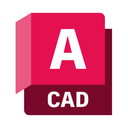Mechanical computer-aided design (MCAD) software is primarily utilized by mechanical engineers and technical designers to create and modify product designs. Also known as mechanical design automation (MDA) software, it allows engineers to produce highly precise two-dimensional (2D) and three-dimensional (3D) models. By generating a virtual 3D representation, users can view the object from multiple angles and test and simulate its functionality before creating a prototype. MCAD software is employed across various industries, including automotive, construction, electronics, and architecture. Basic MCAD packages can create 2D diagrams of mechanical structures, while more advanced software enables the generation and modification of complex 3D geometries. These tools facilitate design simulation and documentation of manufacturing information. In product development, mechanical systems often need to interact with electronic systems. For manufacturing smart electronics, collaboration between electronic and mechanical teams is essential to address the complexities of product design. While integrated electronic CAD (ECAD) and MCAD solutions exist, it’s important to recognize the differences between the two types of software. Unlike MCAD software, which focuses on designing mechanical structures, ECAD software supports electrical engineers at various stages of electronic product design, from conception to manufacturing. While MCAD is typically used for mechanical design, it can also contribute to the electronic design process by creating 3D models of electronic enclosures and equipment. Additionally, it aids in design iteration, involving repeated prototyping, testing, and analysis to refine the product.
Υποβολή νέας εφαρμογής

AutoCAD Web
autodesk.com
Εφαρμογή web AutoCAD: πρόσβαση μέσω προγράμματος περιήγησης σε CAD σχέδια, δημιουργία/επεξεργασία/συνεργασία σε 2D/3D και αποθήκευση στο cloud.

Onshape
onshape.com
Πλατφόρμα cloud για σχεδίαση προϊόντων που ενσωματώνει CAD, διαχείριση δεδομένων (PDM) και συνεργασία σε πραγματικό χρόνο, με πρόσβαση χωρίς εγκατάσταση και έλεγχο εκδόσεων.

SOLIDWORKS
solidworks.com
Το SOLIDWORKS είναι λογισμικό CAD 3D για σχεδιασμό, προσομοίωση, δημοσίευση και διαχείριση δεδομένων προϊόντων.

Altium 365
altium365.com
Πλατφόρμα cloud για σχεδιασμό PCB και ηλεκτρονικών που ενοποιεί δεδομένα, υποστηρίζει συνεργασία σε πραγματικό χρόνο, διαχείριση έργων και ενσωματώσεις εργαλείων.

Vention
vention.io
Το Vention είναι μια cloud πλατφόρμα που επιτρέπει σε κατασκευαστές να σχεδιάζουν, προγραμματίζουν, παραγγέλνουν και αναπτύσσουν αυτοματοποιημένο εξοπλισμό.
Λύσεις
© 2025 WebCatalog, Inc.